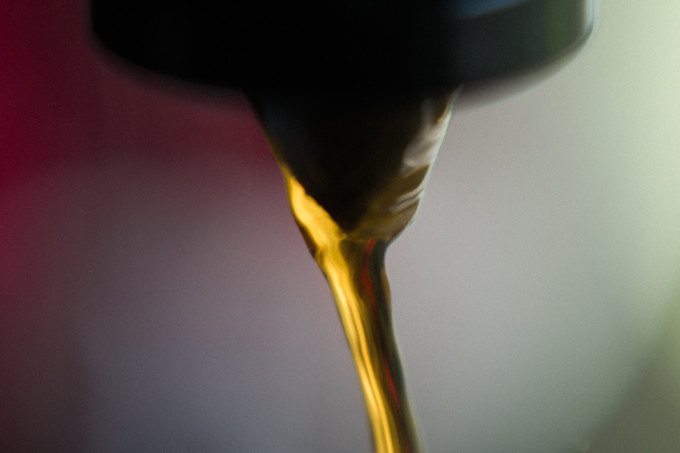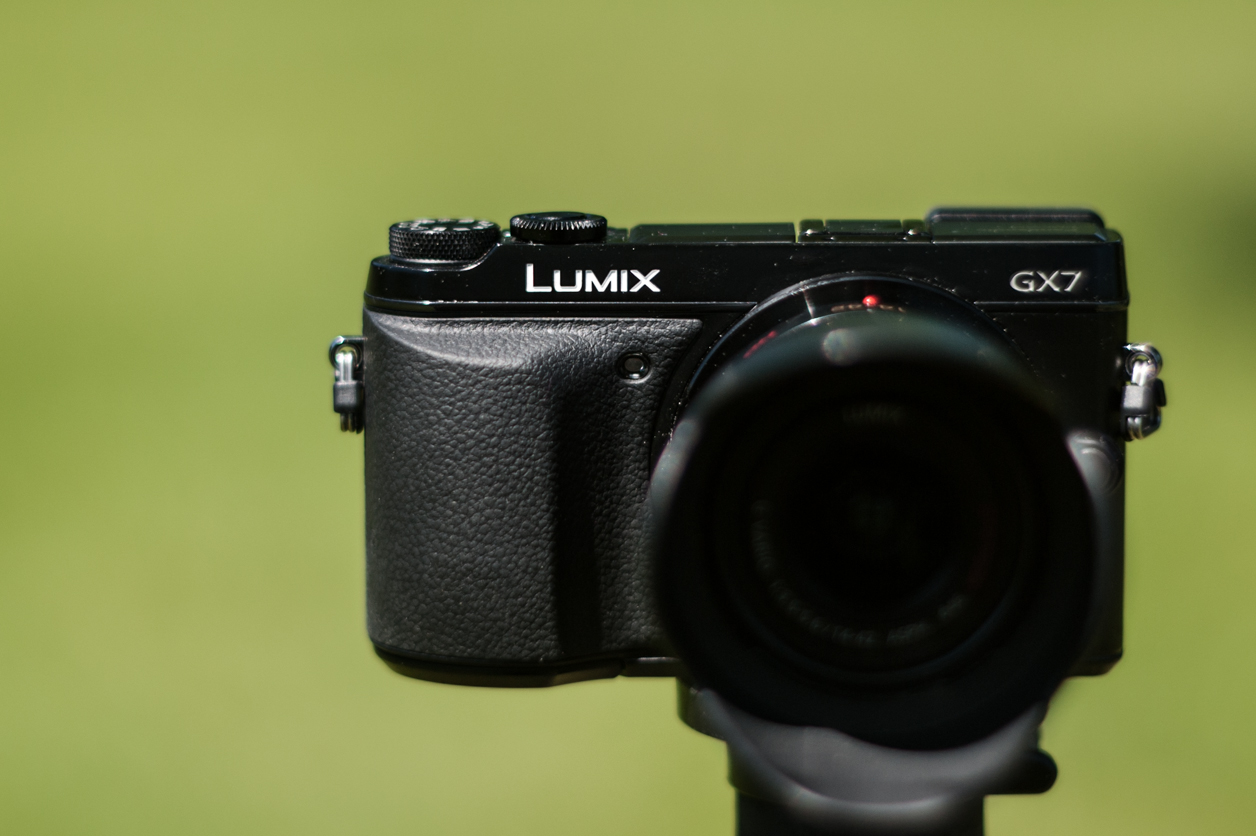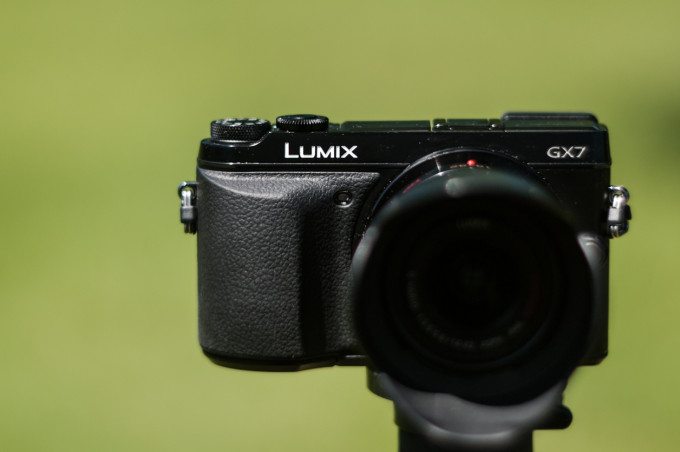
Truthfully, I have never really taken Panasonic digital cameras seriously. Yet, when I was offered this review unit, my curiosity got the best of me. While I heard a lot of good things about the Panasonic GX7, I’ve always had reservations about the Micro Four Thirds. The technology has improved a lot in the recent past, though. So let’s see what Panasonic has done with this camera.
Pros and Cons
Pros
- The camera is light and nimble, and easy to carry anywhere.
- Focus peaking works well, allowing me to use Nikon lenses via an adapter
- The Panasonic GX7 has a good EVF.
Cons
- The display button is easily hit, causing you to switch from the EVF to the LCD unexpectedly.
- The default sleep mode kicks in really fast and is slow to wake up.
- WiFi shortens the battery life.
Gear Used
I used the kit lens that came with the camera, as well as the Olympus 17mm f2.8 pancake. I also used my Soviet Helios-40-2 85mm f1.5, Nikon 24mm f2.8 , Nikkor 50mm f1.2, 200mm f4 and 50mm f1.8 E lenses with a Fotga Nikon F->Micro Four Thirds adapter.
Tech Specs
These are taken from the B&H product listing.
- 16MP Digital Live MOS Sensor
- Venus Engine Image Processor Micro Four Thirds System
- 3.0″ 1,040k-Dot Tilting Touchscreen LCD
- 90° Tilting 2,764k-Dot EVF
- Full HD 1080p AVCHD Video at 60 fps
- MEGA O.I.S. In-Body Image Stabilization
- Built-In Wireless and NFC Connectivity
- Focus Peaking and Magnification Windows
- Magnesium Alloy Body Construction
Ergonomics
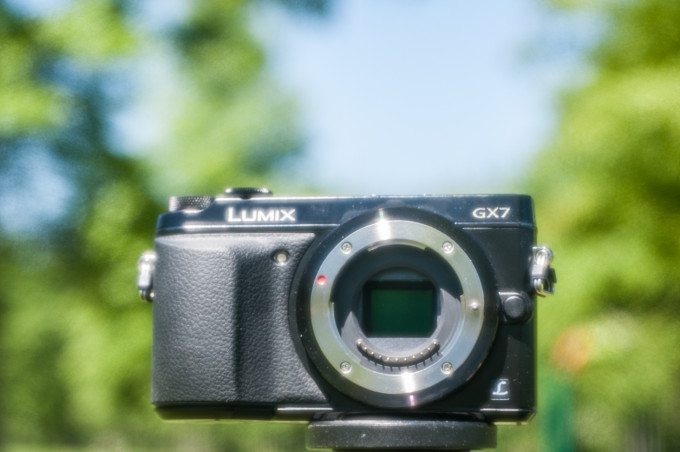
The Panasonic GX7 is a rather small camera–coming from full-frame DSLRs at least. Its Micro Four Thirds sensor has a 2x crop factor, so take this into account when using adapted lenses. The eyelets for the camera strap make the camera sit nicely when it’s around your neck or hanging from your shoulder. When mounted to a tripod or monopod, the GX7 seems tiny. It is in fact so light that it remains still even on a monopod.
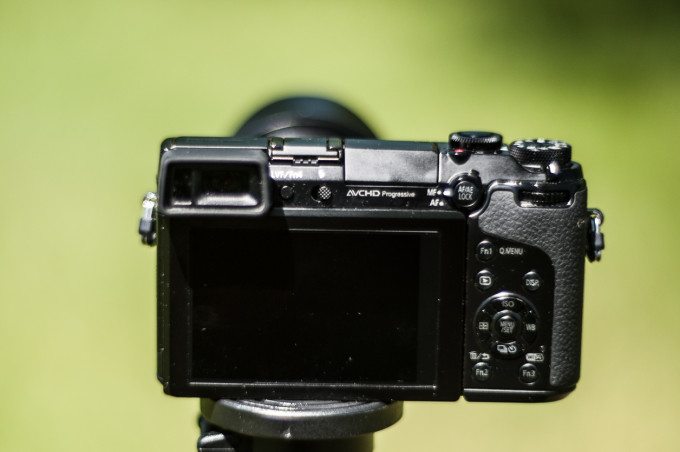
On the back of the Lumix GX7, the buttons are well spaced, and they are raised nicely as well. The intuitive design works very well for a newbie to Panasonic cameras. You do not have to put too much thought into using it (provided you know your basics.)
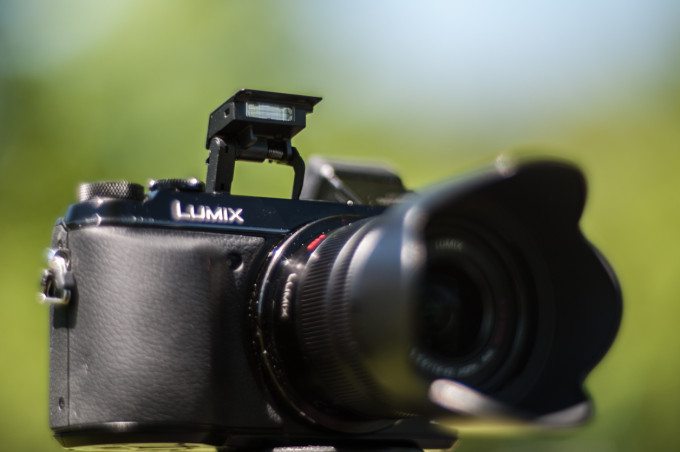
The pop-up flash sits just above the lens mount. It sits on a spring and when released, it comes up quickly. It is also set at a decent height, so it works even with longer lenses. It’s not the largest pop up flash in the world, but it works for this camera.
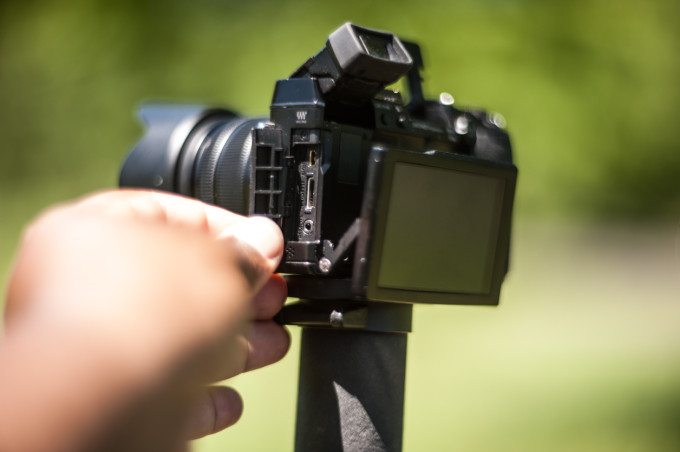
All the ports sit on the left side of the camera and are covered by a secure door. The door feels durable, like it will last the life of the camera.
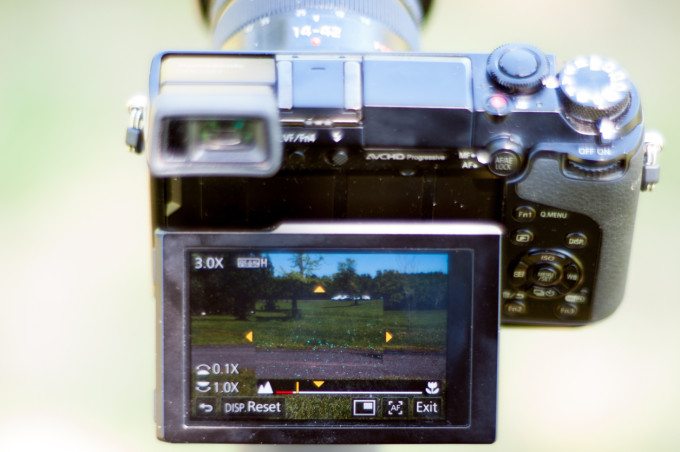
The 3″, tiltable, touch-enabled rear LCD is crisp and clear. It has a good touch sensitivity by default. Like most touchscreens, it attracts fingerprints easily, but they can just as easily be cleaned off again.
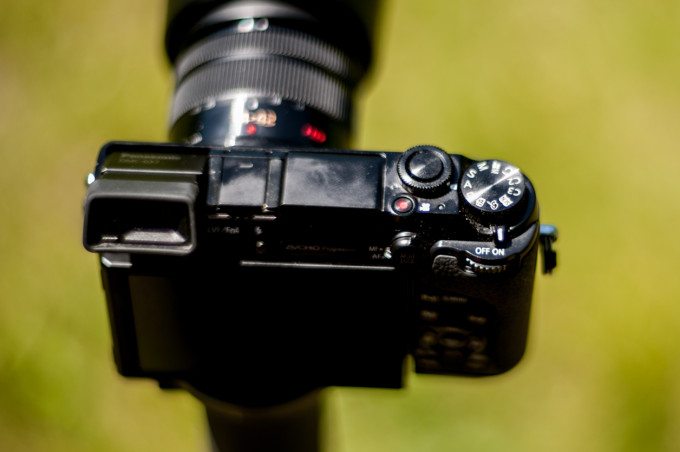
The record button, shutter button and mode selection dials on the top of the camera are tight to operate but don’t interfere with each other. Even with my big fingers, the buttons were easy to use and adjust. The button layout, again, is intuitive and easy to learn.
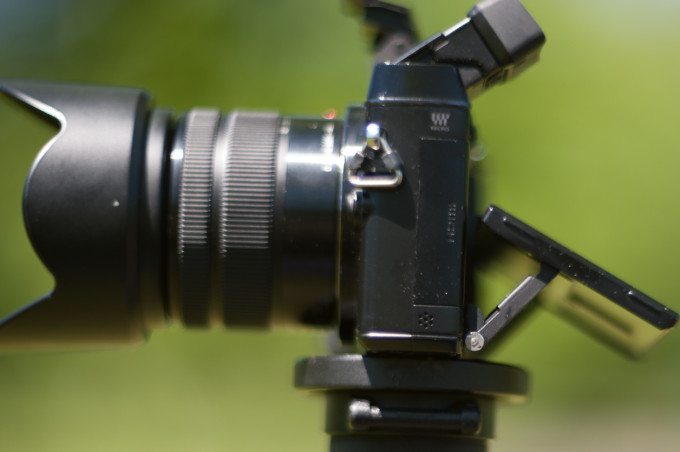
The rangerfinder-esque electronic viewfinder articulates up to 90 degrees, which is a pretty neat feature. For me personally, it’s not really comfortable when it’s raised up 90 degrees. I prefer the traditional way of looking through the viewfinder. But your mileage may vary.
Build Quality
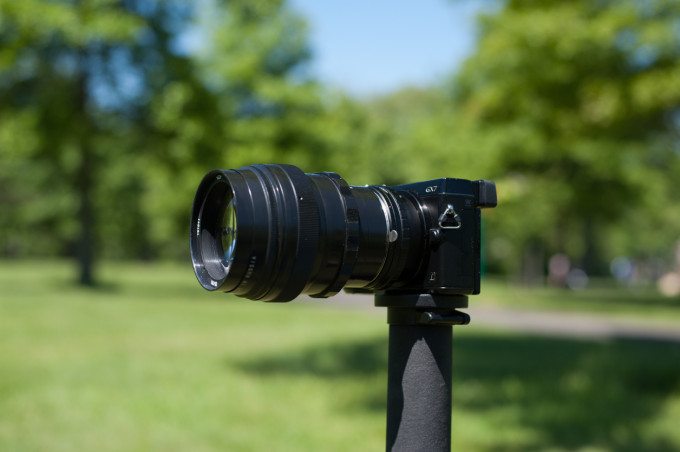
The camera is light yet tightly put together. It feels sturdy and is nice to work with over the course of a day. Its size makes it easy to keep out of sight, which is great for stealthy approaches. Nothing feels flimsy on the camera, the controls are pleasantly spaced out. A person with big hands, like me, will find it easy to use. Overall, the Panasonic GX7 feels really nice in the hand. Usually I find Micro Four Thirds cameras uncomfortable, since I am used to DSLRs. When they try to mimick DSLRs, they just seem awkward and unbalanced. With the location of the EVF on the left of the camera and not the center, the GX7 seems more balanced. Also, the EVF sticks off the back of camera which makes it a little more comfortable.
Autofocus

The autofocus of this camera is very good. When you are working with fast-moving subjects, the GX7 will lock on quickly. Sometimes you only have a second to get that unique shot and if your focus is slow, you’ll miss it. I was in NYC one night and these sailors were walking by. I only had that one moment for that nice candid shot and I got it. If you are shooting with the LCD display, you can tap it to pick your focus point.

The manual focus was just as good. The focus peaking was accurate and a huge help. When manually focusing this is very important , you are already slower than AF so you want to be as efficient as possible. I found using manual focus to greatly extend the battery life also. When going out on photo walks, I used manual focus most of the time.
Ease of Use

For basic photography the camera is very easy to use. If all you want to do is put on a lens and take good quality pictures, the camera is pretty intuitive. Anything beyond that, like time-lapse, you will need to look at the manual. The GX7 is rich with features. Taking a moment to look at the manual opens up a world of possibilities with this camera.
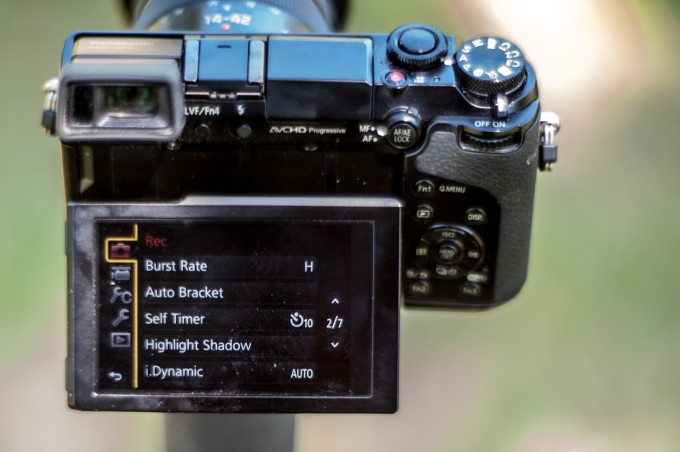
The menus on the camera are pretty easy to navigate, even for those new to Panasonic’s menu structur. This is something that sets it apart from the Olympus offerings. The GX7’s touch screen made navigating the menus even easier.
Metering

The Panasonic GX7 overexposes just a bit by default. When I did the sunny 16 test, I found the resulting image to be a little bright. Using the exposure compensation , you can lower the exposure just a little and the image will be much better. When you are shooting in aperture priority and program mode, the camera gets exposure right in most cases though.
Image Quality

Overall the image quality is great. The colors are vibrant and images are sharp and contrasty. Right out of the camera, the images are all usable as long as you don’t screw up the focusing. In my typical fashion, I put a few images on Instagram and they looked great. The in-camera stabilization also works nicely and helps keep the images sharp.
High ISO Images

For a small sensor, this camera handles low light well. At ISO 3200 you’ll get usable images.There is a little grain in the photos but it’s not bad. I kept this camera on intelligent ISO for most of the review period, and it did not let me down. I tend to move around a lot and had the camera in a lot of different environments. Shooting macro, candids, street photography and events, lighting was never really an issue.
RAW File Versatility
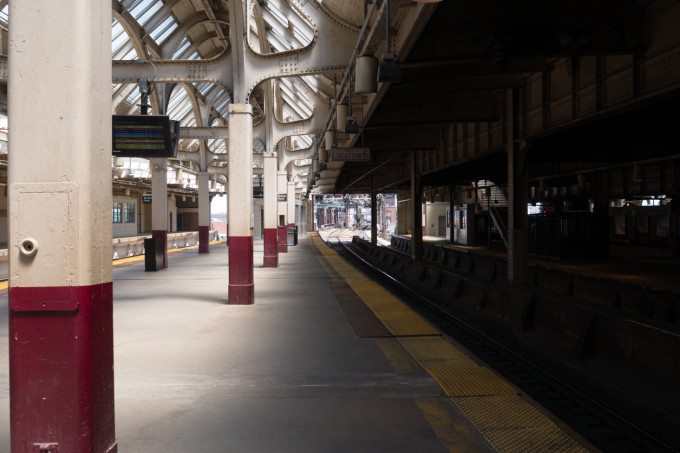
The sensor on the Panasonic GX7 packs a lot of info. If you underexpose in a section of your image or all of it, you can still pull out detail. There will be situations where you can only rescue an image in post, and versatility like this is useful then.

This makes the Panasonic GX7 a very forgiving camera. I was shooting in a train station where the light varied extremely, which led to some dark images. In Adobe Lightroom all I had to do was move the shadow bar, adjust the clarity and the image was much improved.
Video Quality
GX7 Test from G Servo on Vimeo.
The video functionality on the Panasonic GX7 is pretty good. The built-in microphone is extremely sensitive and catches a lot of the surrounding sounds. The in-camera stabilization really helps with achieving shake-free footage. I was able to handhold and record video with ease. The sample video here was a spur-of-the-moment thing. The Panasonic GX7 worked well in that situation and will work even better when you actually plan a video out.
Conclusions
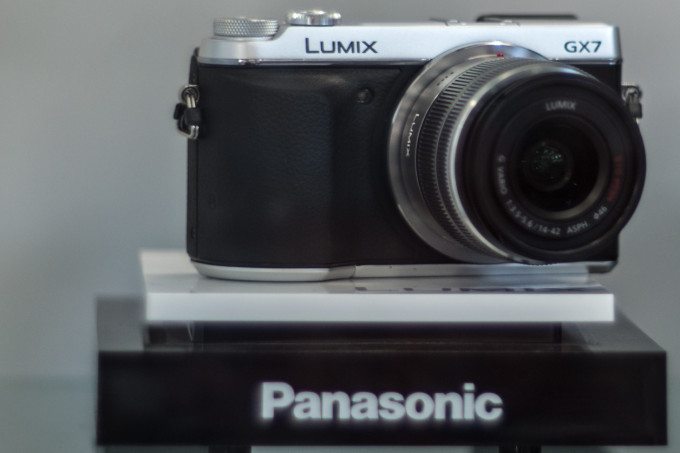
Likes
- The focus peaking works well on the Panasonic GX7.
- In body camera stabilization.
- You can do a lot with the RAW files.
Dislikes
- The battery life is not the greatest.
- There is no mic jack for video.
- The articulating viewfinder was uncomfortable at 90 degrees.
We rate this camera 4 stars out of 5.

The Panasonic GX7 is a surprisingly likeable camera. I am honestly shocked that I enjoyed shooting with it, considering my initial reservations. I had a lot of fun with my manual Nikon lenses. The GX7 may in fact be the first Micro Four Thirds camera I truly enjoyed. If you are traveling and you want an interchangeable lens camera, the GX7 is a good choice. This camera is feature rich but if you just want to take photos, it’s fantastic. From photo walking in New York to discreet event photography this Panasonic GX7 will works very well.
Recommended Lenses and Accessories
- A BlackRapid strap is suggested, because if you are traveling by plane you wont have to put this in a bag.
- A Lumix G Vario 14-140mm f3.5-5.6 its one lens to rule them all when traveling.
- If you have a DSLR you can get an adapter to use your current lenses with this camera.
Additional Sample Images


